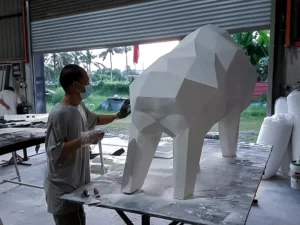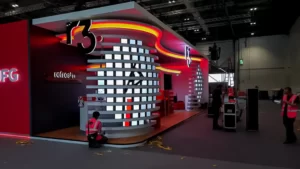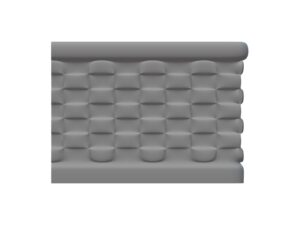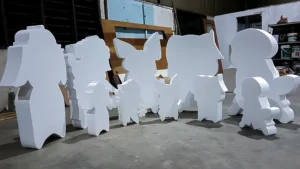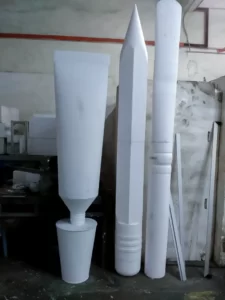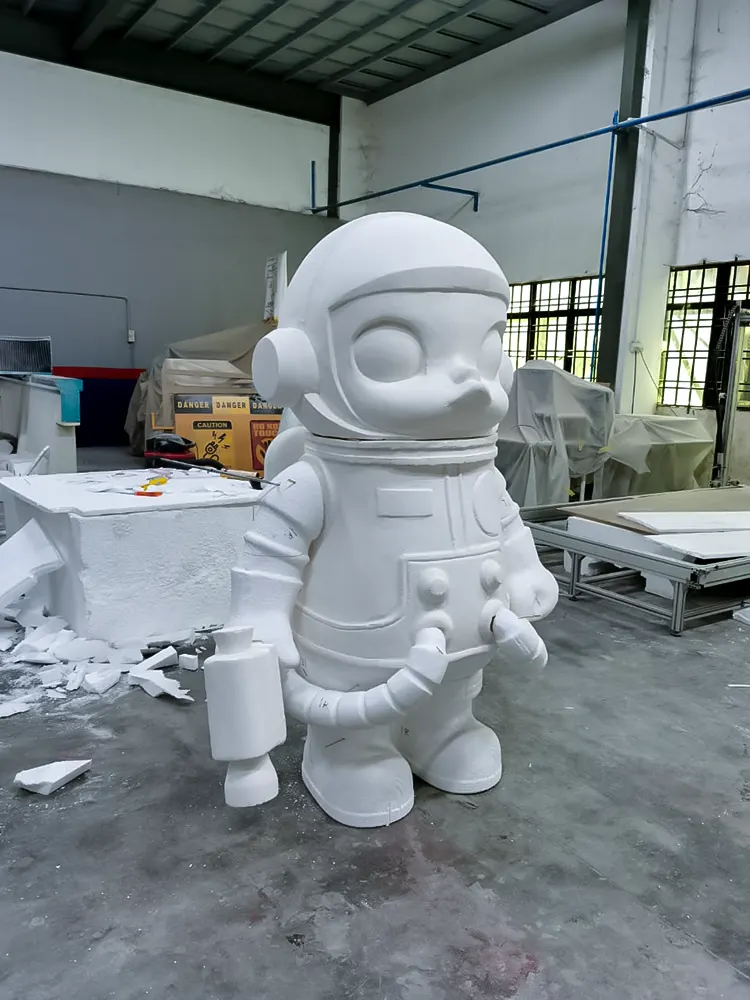
When it comes to sculpting props, choosing the right material is crucial. Whether you’re creating movie props, stage decorations, cosplay accessories, or museum displays, the material you use affects the durability, detail, and overall quality of your final piece.
But with so many options available—foam, clay, resin, fiberglass, wood, and more—how do you know which is best for your project?
This guide breaks down the top materials for sculpting props, their pros and cons, and how to choose the perfect one for your needs.
Key Takeaways
- Foam, clay, fiberglass, resin, wood, and metal are the most common materials for sculpting props.
- The right material depends on budget, durability, weight, and detailing needs.
- Foam and clay are ideal for lightweight, intricate sculptures.
- Fiberglass and resin offer high durability for long-term use.
- Wood and metal are best for sturdy, load-bearing props.
Why Choosing the Right Material Matters
Sculpting props isn’t just about aesthetics—it’s about functionality, weight, durability, and ease of use.
For example:
- A foam sculpture is lightweight and easy to carve, perfect for stage props.
- A fiberglass prop is stronger and long-lasting, great for theme park installations.
- A wooden or metal sculpture is sturdy and heavy, ideal for structural elements.
Best Materials for Sculpting Props
1. Foam – Best for Lightweight & Large-Scale Props
Foam is one of the most popular materials for sculpting props because it’s lightweight, easy to carve, and budget-friendly.
Best For:
- Theater & stage props
- Cosplay & costume accessories
- Large-scale sculptures
Types of Foam for Sculpting Props:
| Foam Type | Best Use |
|---|---|
| Expanded Polystyrene (EPS) | Large, lightweight sculptures |
| Extruded Polystyrene (XPS) | Durable, fine-detail carving |
| EVA Foam | Cosplay props & armor |
Example: Theme park sculptures and movie set props often use EPS foam for large installations.
2. Clay – Best for Fine Details & Custom Molds
Clay is perfect for sculptors who need precise detail and malleability. It allows for hand-sculpted details and molding before being hardened.
Best For:
- Prototype sculpting
- Mold-making for resin or fiberglass props
- Miniature models
Types of Clay for Sculpting Props:
| Clay Type | Best Use |
|---|---|
| Oil-Based Clay (Plastilina) | Keeps details intact, never hardens |
| Water-Based Clay | Dries naturally, easy to work with |
| Polymer Clay | Bakes hard, great for small props |
Example: Movie prop designers use oil-based clay to sculpt master copies before casting them in resin or fiberglass.
3. Fiberglass – Best for Durable, Long-Lasting Props
Fiberglass is strong, lightweight, and ideal for professional prop-making. It’s commonly used for theme parks, movie sets, and outdoor sculptures.
Best For:
- Life-size statues & exhibition displays
- Outdoor props that need weather resistance
- Structural reinforcement for fragile sculptures
Pros & Cons:
Pros: Durable, lightweight, smooth finish
Cons: Requires a mold, can be toxic to work with
Example: The Marina Bay Sands CNY 2021 Celebration Ox Sculpture was fiberglass-cast for durability.
4. Resin – Best for Detailed, Hard-Surface Props
Resin is used for high-detail casting, producing hard, plastic-like props. It’s often used in special effects, statues, and collectible models.
Best For:
- Replicas of existing objects
- Action figures & collectibles
- High-detail sci-fi & fantasy props
Types of Resin for Prop Making:
| Resin Type | Best Use |
|---|---|
| Epoxy Resin | Strong, waterproof props |
| Polyurethane Resin | Fast-curing, durable |
| Polyester Resin | Cheaper, used in fiberglass casting |
Example: Movie weapons and armor are often cast from polyurethane resin for realistic finishes.
5. Wood – Best for Sturdy, Traditional Props
Wood is strong, natural, and perfect for vintage or classic designs. It’s carved, sanded, and painted for a high-quality, professional look.
Best For:
- Renaissance fair props & medieval weapons
- Historical museum displays
- Large structural elements in theaters
Types of Wood for Prop Sculpting:
| Wood Type | Best Use |
|---|---|
| Balsa Wood | Lightweight, easy to carve |
| Plywood | Budget-friendly, structural props |
| Hardwood (Oak, Maple) | Durable, detailed carving |
Example: Stage swords, shields, and furniture are often made from hardwood or plywood.
6. Metal – Best for Industrial & Heavy-Duty Props
For sturdy, industrial-looking props, metal is the best choice. It’s commonly used for steampunk designs, heavy armor, and mechanical-looking props.
Best For:
- Steampunk-style props
- Reinforced structural pieces
- Military, sci-fi, or futuristic props
Example: Industrial-style decor and theme park props often use welded metal sculptures.
How to Choose the Best Material for Your Prop
| Factor | Best Material |
|---|---|
| Lightweight & Portable | Foam, resin |
| High Detail | Clay, resin |
| Durability | Fiberglass, wood |
| Realistic Look | Resin, metal |
| Budget-Friendly | Foam, clay |
Pro Tip: Combine materials! Many professionals use foam for base structures and resin for detailed parts.
Final Thoughts
Choosing the right material for sculpting props depends on your project’s needs.
- Foam is great for lightweight and large sculptures.
- Clay & resin offer high detail for fine sculptures.
- Fiberglass & metal provide long-term durability.
- Wood is classic and sturdy for historical props.
Need expert prop sculpting? Work with professional model makers for high-quality, durable props!
